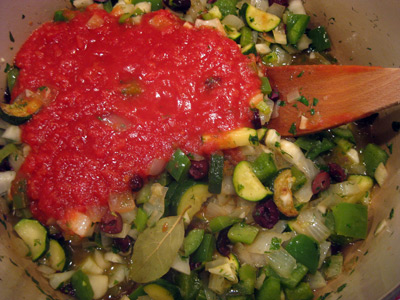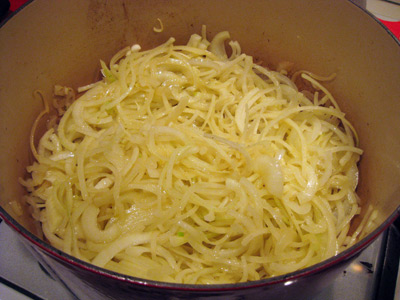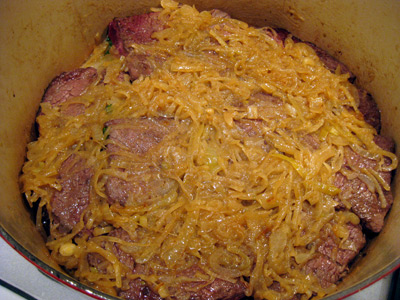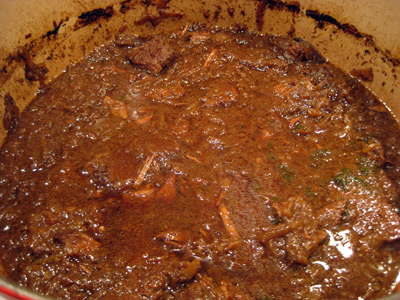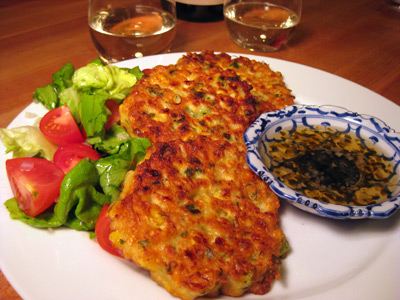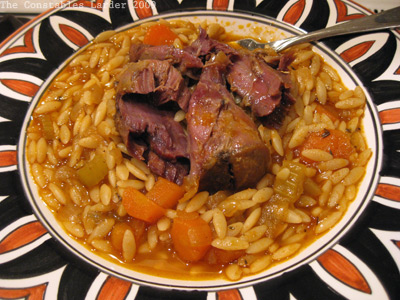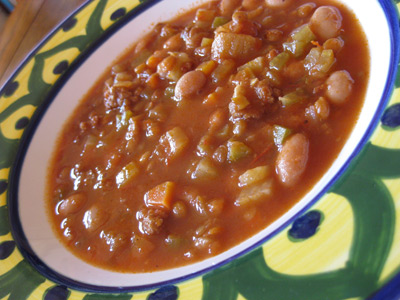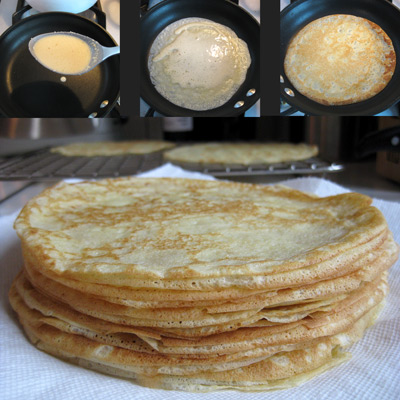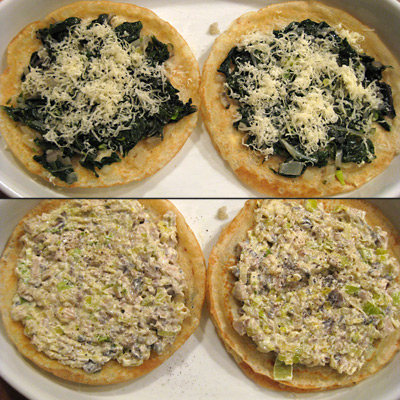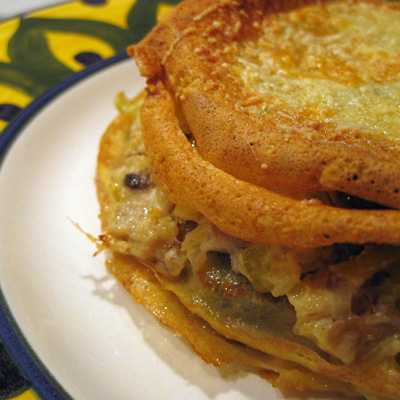I only like to blog the successes unless there is humor or an interesting lesson in the duds. “Giff is an idiot” doesn’t qualify as a lesson. Too obvious. I am pleased to say that last night’s meal was an unqualified success. Even I, who tends to be hypercritical of my own dishes (to Lisl’s annoyance), loved this. Essentially, you make a really good vegetable stew with provencal flavors, and then finish it off with the fish and serve on a bed of rice. Most satisfying!
 Our fishmonger had some really good looking tuna, so I had him cut some 1/2 slices adding up to just over a pound. I think a firm fleshed fish like tuna or halibut is best for this recipe.
Our fishmonger had some really good looking tuna, so I had him cut some 1/2 slices adding up to just over a pound. I think a firm fleshed fish like tuna or halibut is best for this recipe.
We served this dish with a delicious white wine from the Jongieux region in France called Carrel Vin de Savoie, and some freshly baked bread.
Provencal Fish Stew
Serves 4 to 6
~1 lb raw tuna, cut into 1 inch cubes
1 large vidalia onion, chopped
1 celery stalk, chopped
1 medium zucchini, halved and sliced
1 green pepper, chopped
1 fennel bulb, chopped
7 small/medium garlic cloves (and if you really love garlic, it can take more)
large handful of kalamata olives, chopped
1 28 oz can of crushed tomatoes
1/2 cup dry white wine (or dry vermouth)
1/2 cup water
handful of parsley, chopped
handful of fennel fronds, chopped
large sprig of thyme (or several, tied together)
1 bay leaf
4 or 5 medium tomatoes, sliced
1 medium red onion, sliced into rings
juice of 1/2 lemon
salt and pepper
olive oil
served with 1 cup of long grain white rice
In a dutch oven or stew pot, heat up a splash of olive oil on moderate heat and saute the onions until translucent. Add in the zucchini and cook for 5 minutes, then add in the chopped celery, fennel, green pepper and garlic, along with a couple pinches of salt (not too much since the olives will add saltiness). Continue to saute for another 10 to 15 minutes, stirring occasionally and letting the vegetables get tender.
Finely chop the parsley and fennel frond and add to the pot. Toss in a bay leaf and a large sprig of fresh thyme, along with the 1/2 cup of white wine, 1/2 cup of water, crushed tomatoes, kalamata olives, and juice from half a lemon. Stir all together and cook on a light simmer for another 10 to 15 minutes.
Thinly slice the tomatoes and add to the pot. Thinly slice the red onion into rings and stir into the pot. Cover and continue to cook on a light simmer for 20 to 30 more minutes, letting all the flavors meld together. Taste for salt and pepper.
Slice the tuna into rough cubes about 1/2 to 1 inch a side. Start cooking your rice.
When your rice is 5 to 10 minutes from being done, add the tuna to the stew pot. The fish should only need 5 to 10 minutes to become firm and cook through, no more.
Plate by spooning a mound of rice into a bowl, ladle the fish stew on top, and then grind a little fresh pepper.

